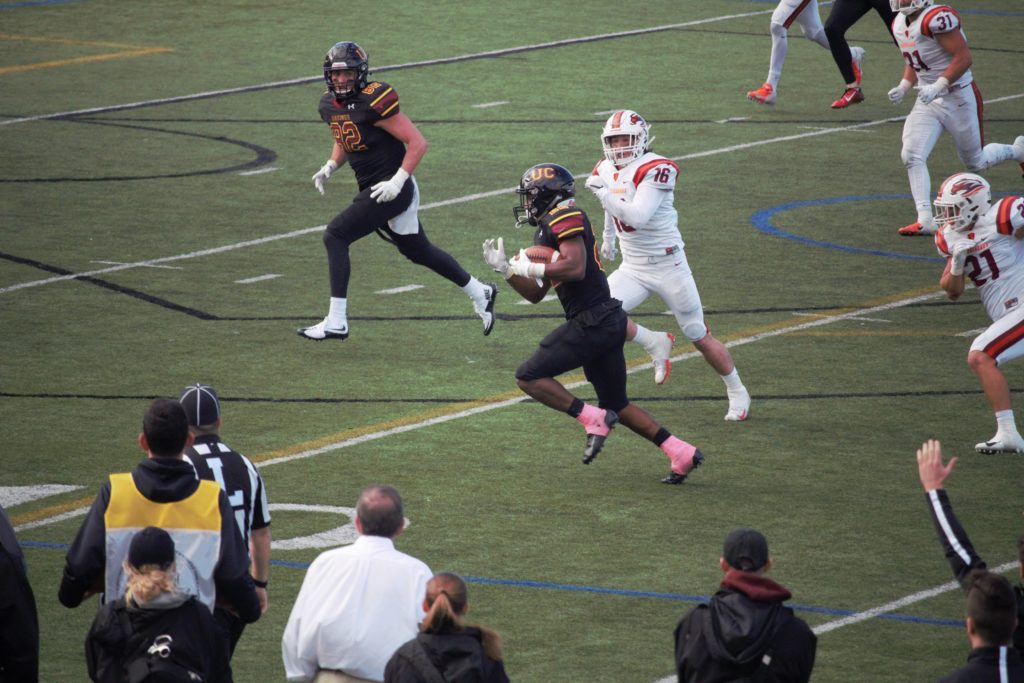There is so much more to playing running back than just carrying the football. Running with the football is only one aspect of playing the position. We work hard on developing complete players at not just our running back position, but with every position. During the practice week we will break into individual sessions. This means that all the positions go with their position coaches. This is where we really work on developing all around players.
Building a Complete Running Back isn’t easy, but here’s what we focus on…
Ball Security
We all always stressing ball security. From day one, we tell our running backs that if they can’t hold onto the football, then they won’t be carrying it. This is something they hear a ton. We say that because we work regularly on ball security so there is no excuse. If I feel we haven’t worked on a technique enough, I won’t get mad at a mistake. However, if a kid fumbles the football, then I’m going to be pretty mad because that is a technique we work tirelessly at.
For ball security we teach the four points of pressure. Many teams will use the eagle claw technique or the five points of pressure technique. I use the four points of pressure because when I attended a clinic a couple of years ago a college coach explained it to me and I really like it.
Point of Pressure 1: Hand over the nose of the football. This is one of the most important aspects of this technique.
Point of Pressure 2: Ball against the forearm. You do not want to see any air between the football and the ball carriers forearm. If point of pressure #1 is followed, the forearm will follow the hand.
Paints of Pressure 3: Football must be firmly against the breastplate high and tight.
Points of Pressure 4: Roll the elbow tight against your body, now there is no way a defender can punch the ball out from behind.
Related Content: Progression for Carrying the Football
Blocking
Blocking is something that all our players work on regularly. There’s only one player carrying the ball during each play so that means the other 10 better be great blockers or carrying out a fake. The run blocking technique does vary depending on what the schematic of the play is, but we like our running backs to attack our blocks. We want to aggressively attack our blocks with active feet and with our hands inside. We want to deliver the block first. We tell our running backs all the time, be first with your block. We focus a lot on making sure our running backs bring their feet to the block. We don’t want them to reach or lunge. It’s also very important that the running backs understand leverage. They have to know where the ball carrier is going and make sure they attack their block with the proper leverage. Biggest thing is being aggressive, active feet, bring feet with you, and finish.
Related Content: Best Running Back Drills for Youth Football
Play-action / Fakes ‘Playing without the Football’
Faking over the ball is another aspect we hammer home. We demand that our running backs carry out their fakes. We want our running back not to just fake, but fake over the football and continue running. Honestly, throughout the years the biggest issues we’ve had with our running backs was carrying out fakes. Sometimes kids get lazy or some even forget. What we do is we hold our kids accountable during practice and during the games. The first practice back after the game is when we watch film. The kids know that if they don’t carry out their fake they will be called out on it during film. There’s an old saying, the film doesn’t lie!
Effort Attitude and Toughness
Teaching and coaching up effort, attitude and toughness is very difficult. We like to make all of our practices very competitive, upbeat and challenging. We believe that if the kids compete during the practice week, they will be more likely to compete during the actual game. Effort and attitude is something that is practiced, just like any other technique. During all runs we make sure our running backs finish all of their runs. We want them to run through contact and always keep low pad level and feet active.
Route Running & Catching the Football
In youth football running backs don’t have to catch the ball very much. I mean there are screens, swing passes, and thing like that but overall they are either running the ball, blocking or carrying out a fake. However, if you do utilize your running back in the passing game you need to make sure he is running crisp routes and able to catch the ball regardless. If you want your running backs to run crisp routes you need to practice them. We’ll do a passing session at the end of every team offense period. We’ll also run our routes with our RBs before practice begins. We don’t have a ton of different passing concepts, but the ones do we have, we practice the heck out of them. So I would recommend that you have your running backs run routes and catch the football every practice. It may not matter as much in youth, but when they get to middle, high school, or even college, they must be able to catch the football.
